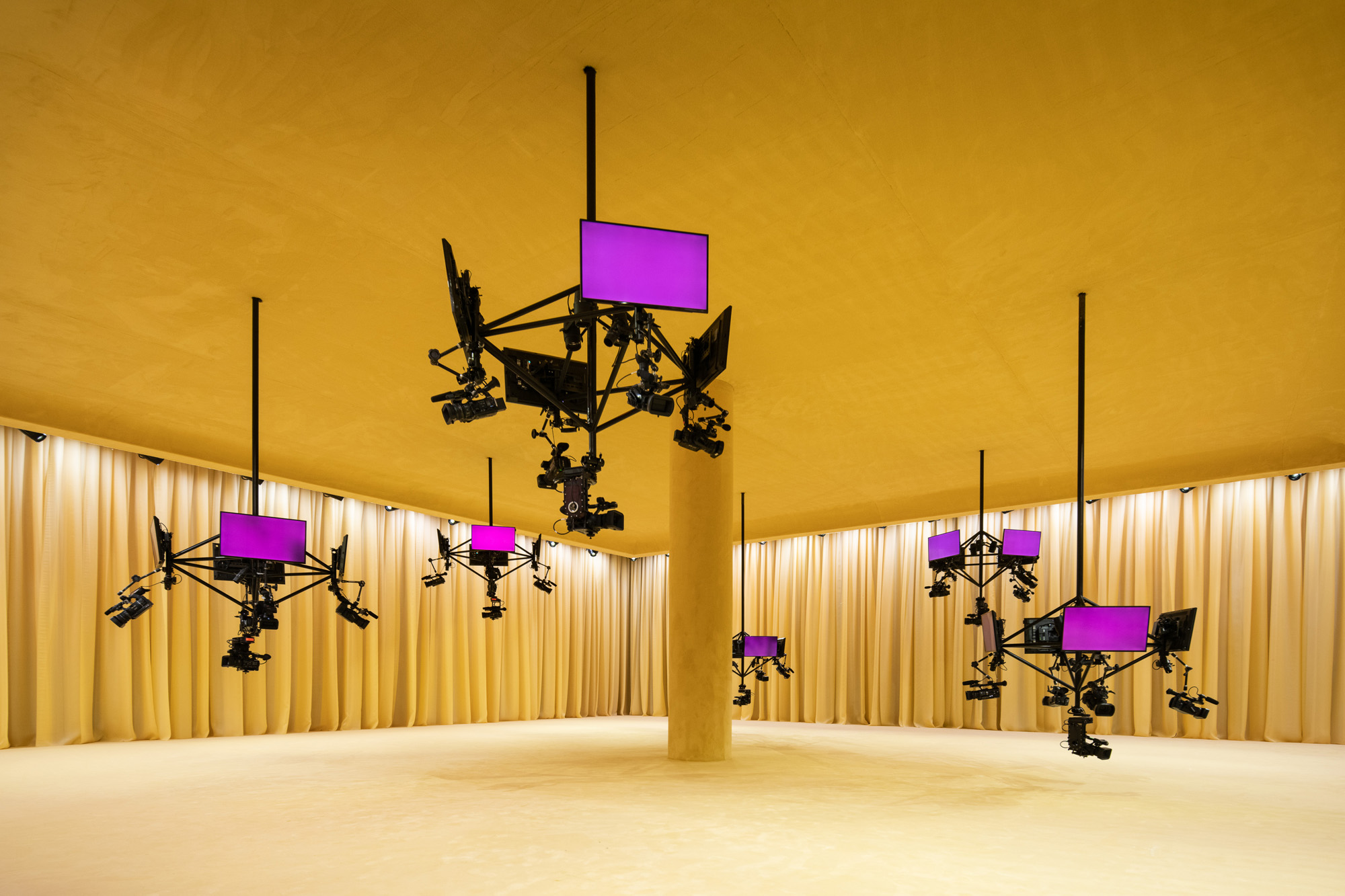
The house of Prada, currently under the creative direction of Miuccia Prada and Belgian designer Raf Simons, stands distinct in the landscape of fashion. Its style is characterised by a dual narrative: on one side, Prada embodies a timeless elegance rooted in sophisticated cultural references, such as Italian neorealism. On the other, it boldly ventures into cutting-edge modernity, bravely skirting the edges of banality.
A Prada fashion show is the prime setting for observing these narratives, particularly when they take on the language of architecture. Here, we are granted a view of how the future of fashion might materialise. Since Miuccia Prada introduced her first womenswear line for the family-owned business in 1988, these runway shows have proved a benchmark to gauge the zeitgeist.
Prada’s show sets have become intrinsic to the presentation of the house’s collections. They are designed by the Rotterdam-based OMA/AMO, led by the eminent Dutch architect Rem Koolhaas. This collaboration is the most enduring of its kind, bridging the worlds of architecture and fashion for 25 years. It has revolutionised the fashion show as spectacle and pushed the boundaries of what is expected from a runway presentation.
25 years of OMA/AMO and Prada’s extraordinary runway sets
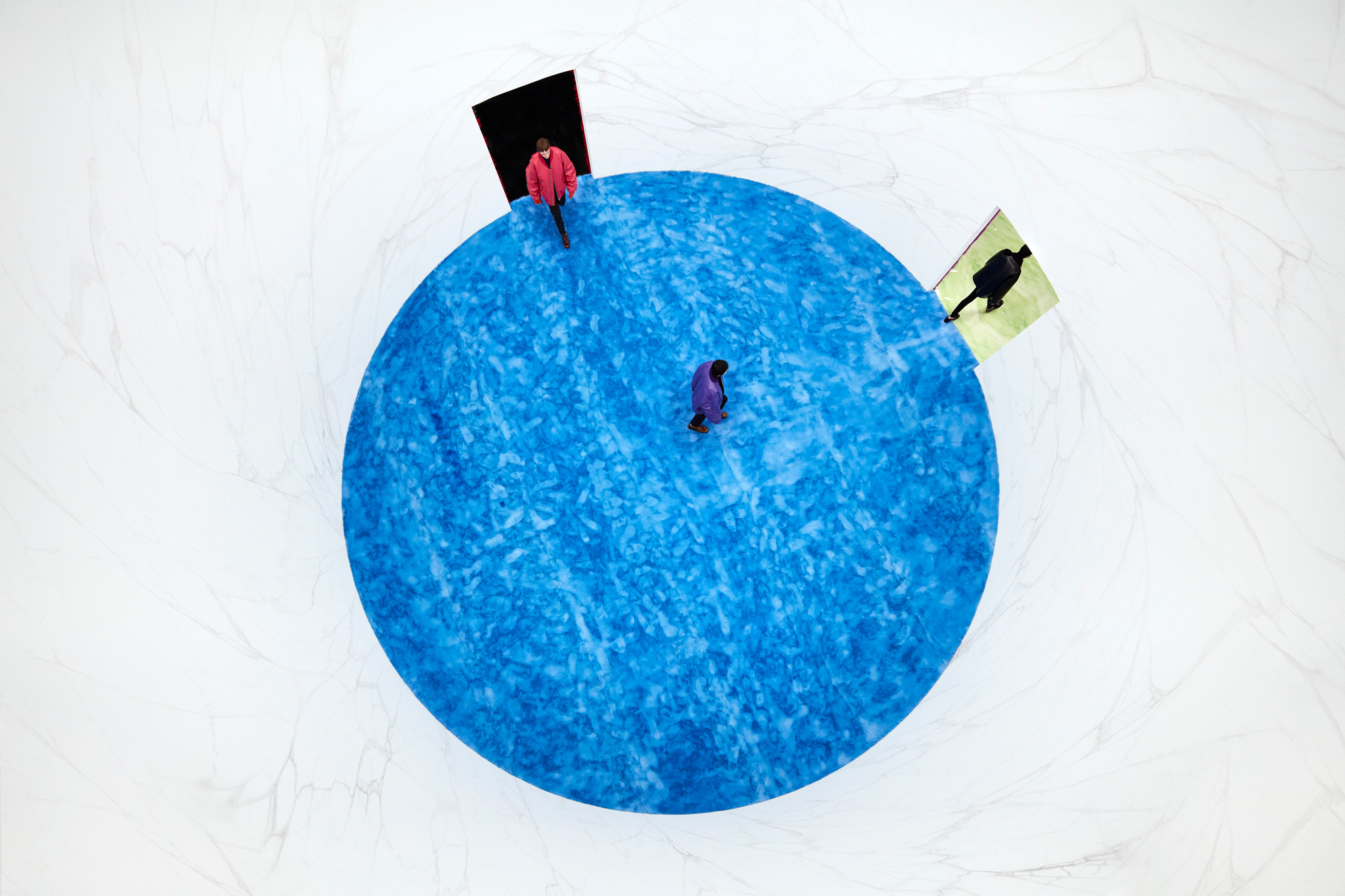
The collaboration began in 1999 when Prada approached OMA (Office for Metropolitan Architecture) with a request to design its New York store. This marked the active start of AMO (OMA in reverse), the research arm of the practice, dedicated to applying architectural thinking to various disciplines. Initially, AMO’s role primarily involved experimenting with content creation and video production, showcasing a new architectonical ability to enhance the Prada brand through various mediums. With the S/S 2004 fashion show, though, AMO focused exclusively on the set design, which was then regularly staged in an industrial space at the Prada HQ on Milan’s via Fogazzaro. The practice has been collaborating with Miuccia Prada – and later, with Raf Simons – on the show sets ever since.
This season’s sets were particularly striking. For the men’s and women’s S/S 2024 show set, which featured a dripping wall of slime, the architects successfully straddled a difficult line. They not only transformed the set into a space that spoke to the social-media moment but maintained the essence of experimentation with physical space. The achievement marks a unique fusion of digital-age aesthetics with the tangible aspects of architectural design, appealing to a modern, tech-savvy audience while preserving the authenticity of spatial exploration.
With the opening of the OMA-designed Fondazione Prada’s Torre in 2018 – part of the foundation’s new location in Largo Isarco in the south of Milan – Prada’s fashion shows found their new home in Deposito, a vast industrial space on its ground floor. En route there for the A/W 2018 womenswear show, I chatted with my taxi driver, pointing out the neon lights that Prada and AMO had erected on the skyline that season. The driver shook his head: ‘No, signora, non è Prada, è un lunapark!’ (‘No, ma’am, it’s not Prada, it’s an amusement park!’). His confusion reminded me of Koolhaas’ words in his 1978 book Delirious New York, where he stated that ‘Luna Park [in Coney Island] is the first manifestation of a curse which is to haunt the architectural profession for the rest of its life, the formula: technology + cardboard (or any other flimsy material) = reality.’
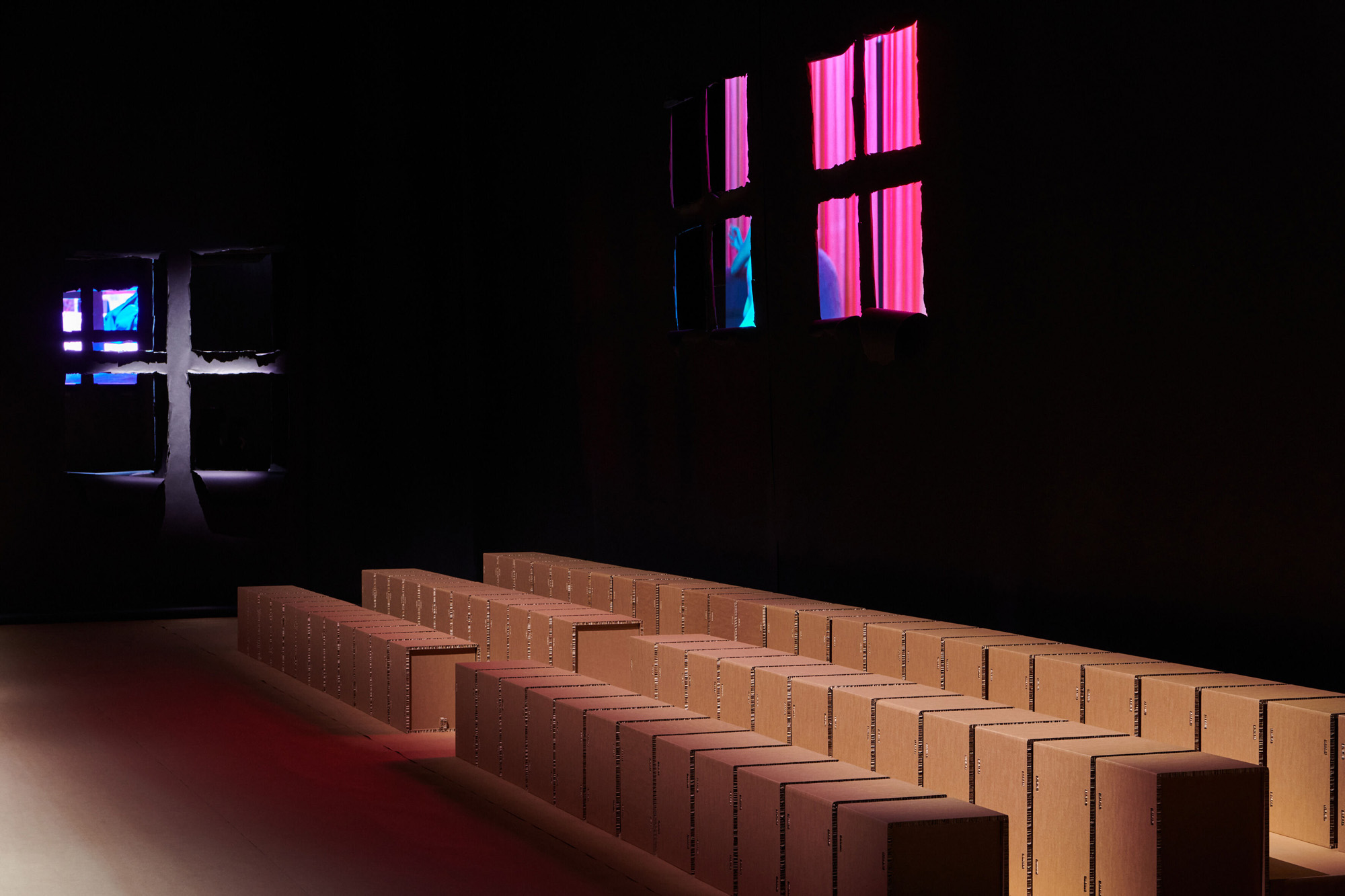
‘What has always interested me is whether we could find ways to experiment, and to experiment with architectural transformation,’ says Koolhaas when I ask him why he believes the collaboration with Prada has been so lasting. ‘A lot of our work together has been connected to an interest in generating transformation through the know-how of fashion. For instance, if you take the ceiling that moves up and down [as was the case at Prada’s A/W 2023 men’s and womenswear show sets], if you were to do it as an architect, it would take at least a year and a half to engineer, and it would cost at least €3 million at that scale.
‘What is fascinating [about collaborating with a] fashion mentality is that it takes maybe three weeks, and is done not using metal and steel but foam and Velcro, yet the effect is the same. For us, it’s really interesting for us to use fashion tools to experiment with architecture.’
Reflecting on the formula learned from Luna Park, one of Coney Island’s first enclosed theme parks, Koolhaas says: ‘In my early writings about New York, my focus extended beyond just the phenomenon itself; I aimed to understand the early effects of technology on communities and on reality. This early realisation has always stayed with me.
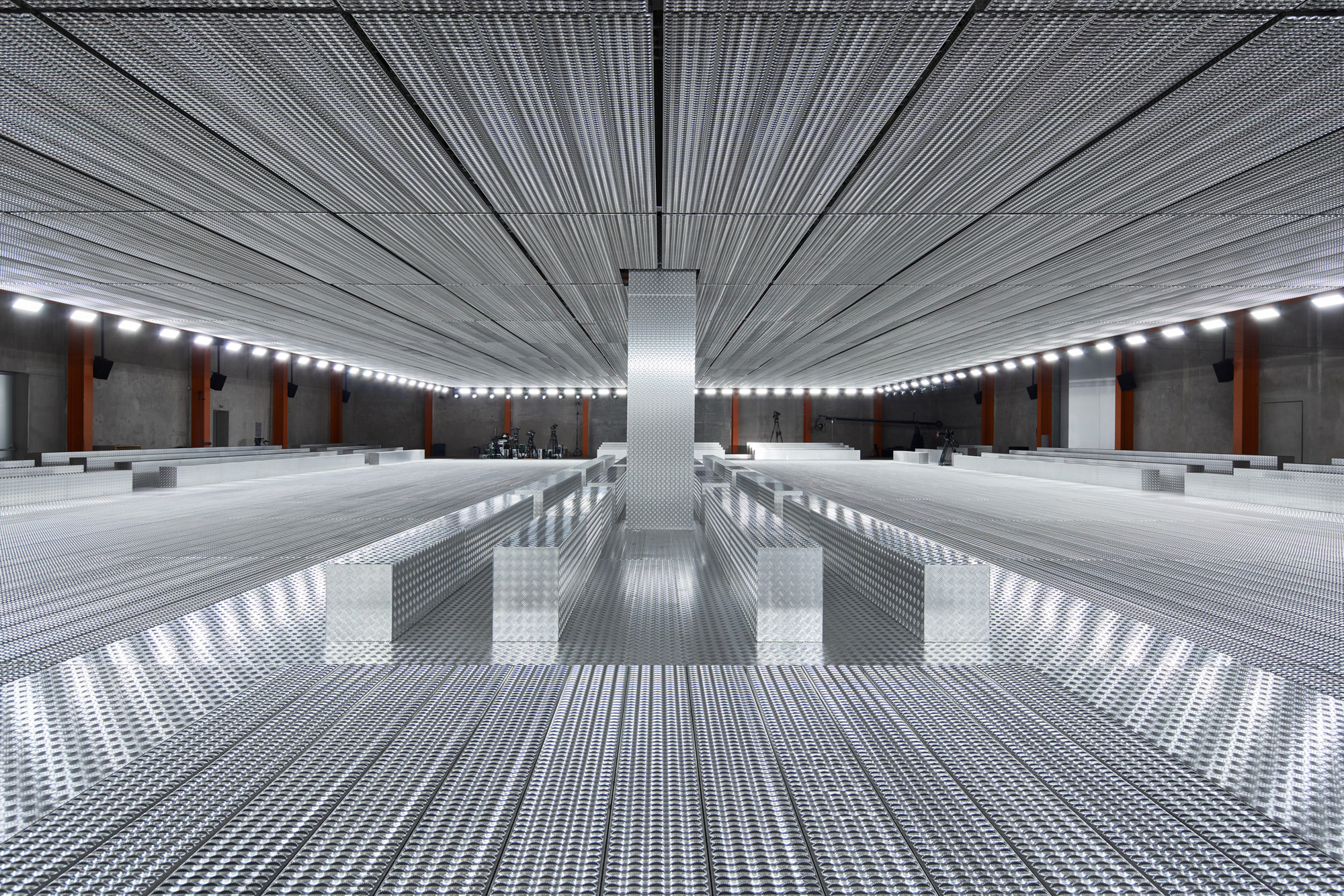
‘But it’s important to emphasise that none of the work we’ve accomplished with Prada would have been possible without a dedicated team. It requires an extensive team effort, and often, changing team dynamics is crucial to keep the project’s intelligence alive. We work with a mix of consistent elements – you could call it a formula – and an endless array of variations. These variations come from our partners, the teams themselves, and the people who work on the project. This is why Giulio is here with us today.’
Giulio Margheri, associate architect at OMA, joined the Prada project team at AMO for the house’s S/S 2016 show. Margheri tells me that AMO never starts with a conventional brief. Instead, the process begins with distinct, sometimes seemingly unrelated words. It’s a deeply involved and interactive journey, typically necessitating around six discussions between the AMO and Prada teams. These dialogues guide AMO’s work by fostering an understanding of the overarching mood or critical elements that might influence the collection. This is then translated into a unique expression, explored in architectural drawings, visualisations, and physical models.
‘There is never one direction we work, but several, and it is a constant,’ Margheri adds. ‘It’s also a response to what is happening in the outside world, or to the political situation. This conversation is always a challenge on both sides. It’s interesting, sometimes when we discuss a show, we at AMO might refer to, let’s say, the “yellow curtains” show (S/S 2021), while the Prada team might refer to the “banana pattern” (S/S 2011). This illustrates that we operate with two different reference systems simultaneously – architecture and fashion.’ Asked for the words for S/S 2024, Giulio responds with ‘organic minimalism’.
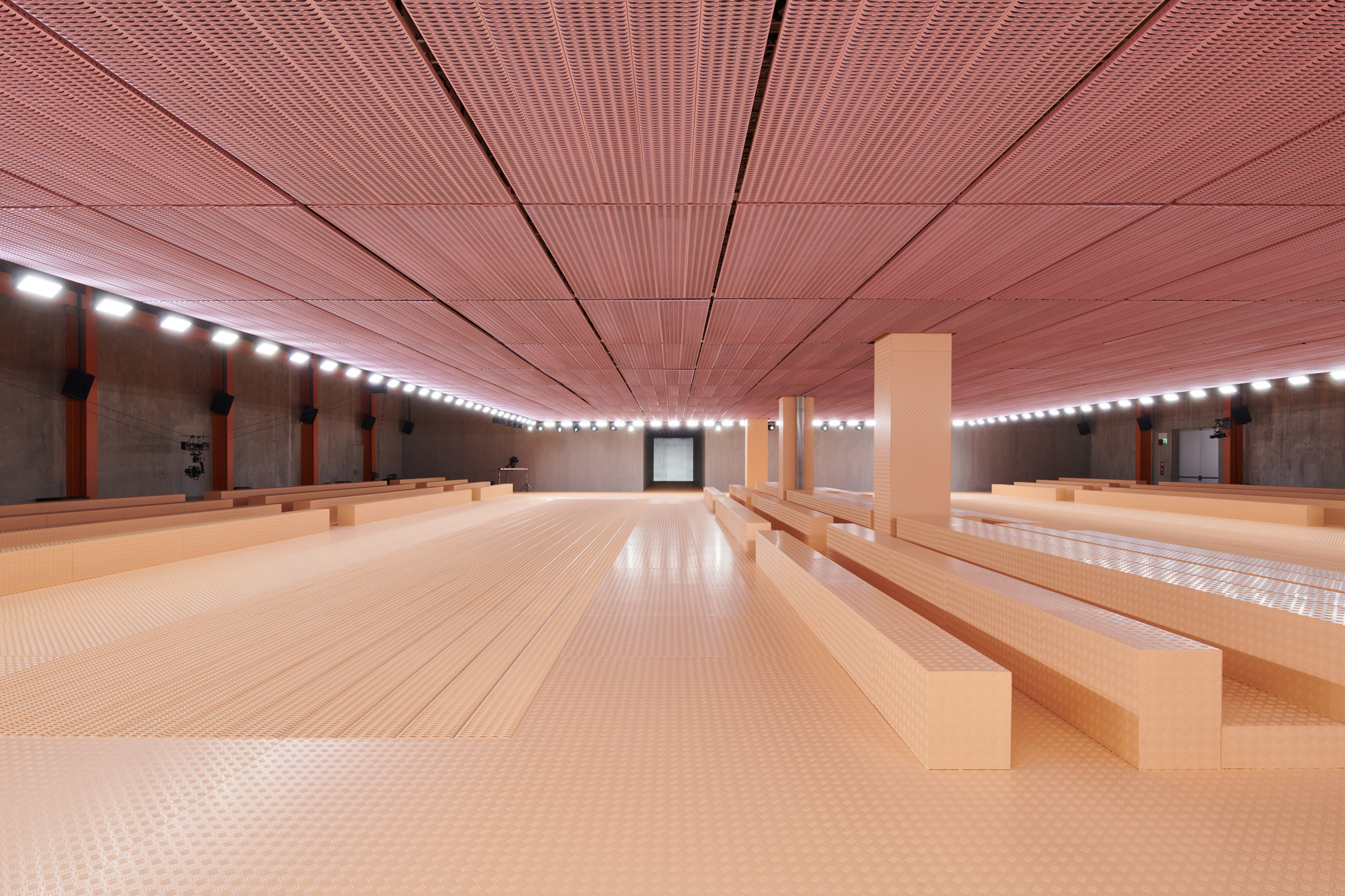
Koolhaas dislikes being asked about his or AMO’s contribution to fashion. In his own words: ‘I’m nervous about discussing my work or our influence in such terms. I aim to maintain freedom. Dwelling on this could become a significant burden. Our office strives to explore any direction without being tied down by these heavy considerations, as it could restrict our freedom.’
After pausing, he continues: ‘One aspect I can acknowledge is our demonstration of long-term engagement in fashion, an industry typically known for short-term partnerships. This might be the most intriguing aspect and perhaps why we’re discussing this now. Our collaboration covers a broad spectrum of contrasting approaches, yet they all stem from the same source. From the start, there was an almost automatic understanding of our mutual ambitions and aesthetics with Prada. We instinctively embraced Prada’s ambitions to challenge convention, to work with concepts of ugliness, and to experiment with uniforms and uniformity.’
In line with Koolhaas’ formula in Delirious New York, the collaboration between Prada and OMA/AMO shows that shaping the reality of architecture and the future of fashion through runway shows involves more than just technology and simple materials; it’s fundamentally driven by a continuous hunger for knowledge and innovation.
A/W 2021
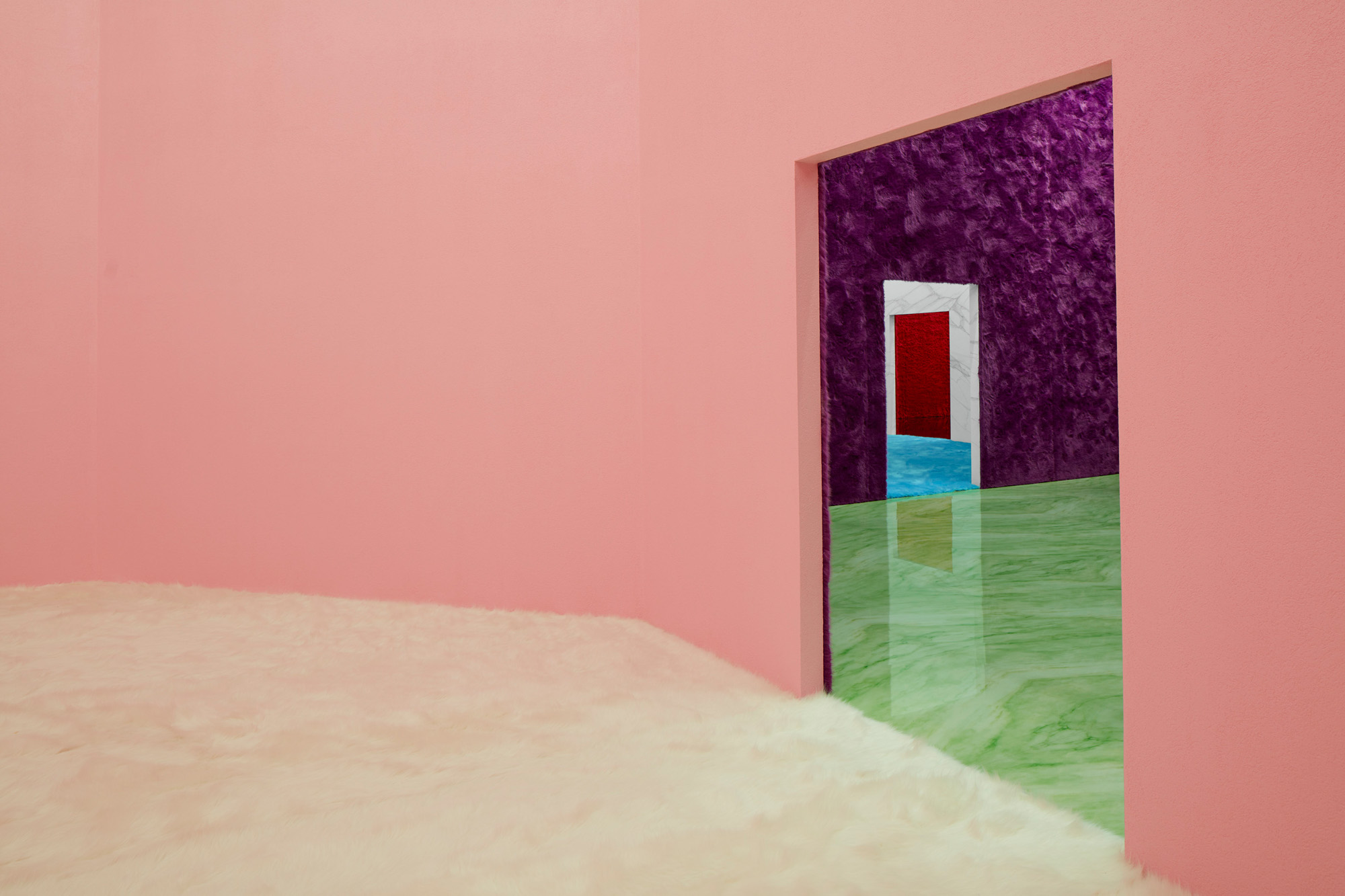
For the Prada A/W 2021 show (featuring the first menswear collaboration by Miuccia Prada and Raf Simons), AMO created a colourful set designed to be broadcast rather than experienced by a live audience. The models navigated an interior of faux fur and marble planes, with the camera closely following them. This led Koolhaas to coin the term ‘close-up from the back’, a rare instance of an architect creating terminology that was later adopted by the fashion industry
S/S 2024
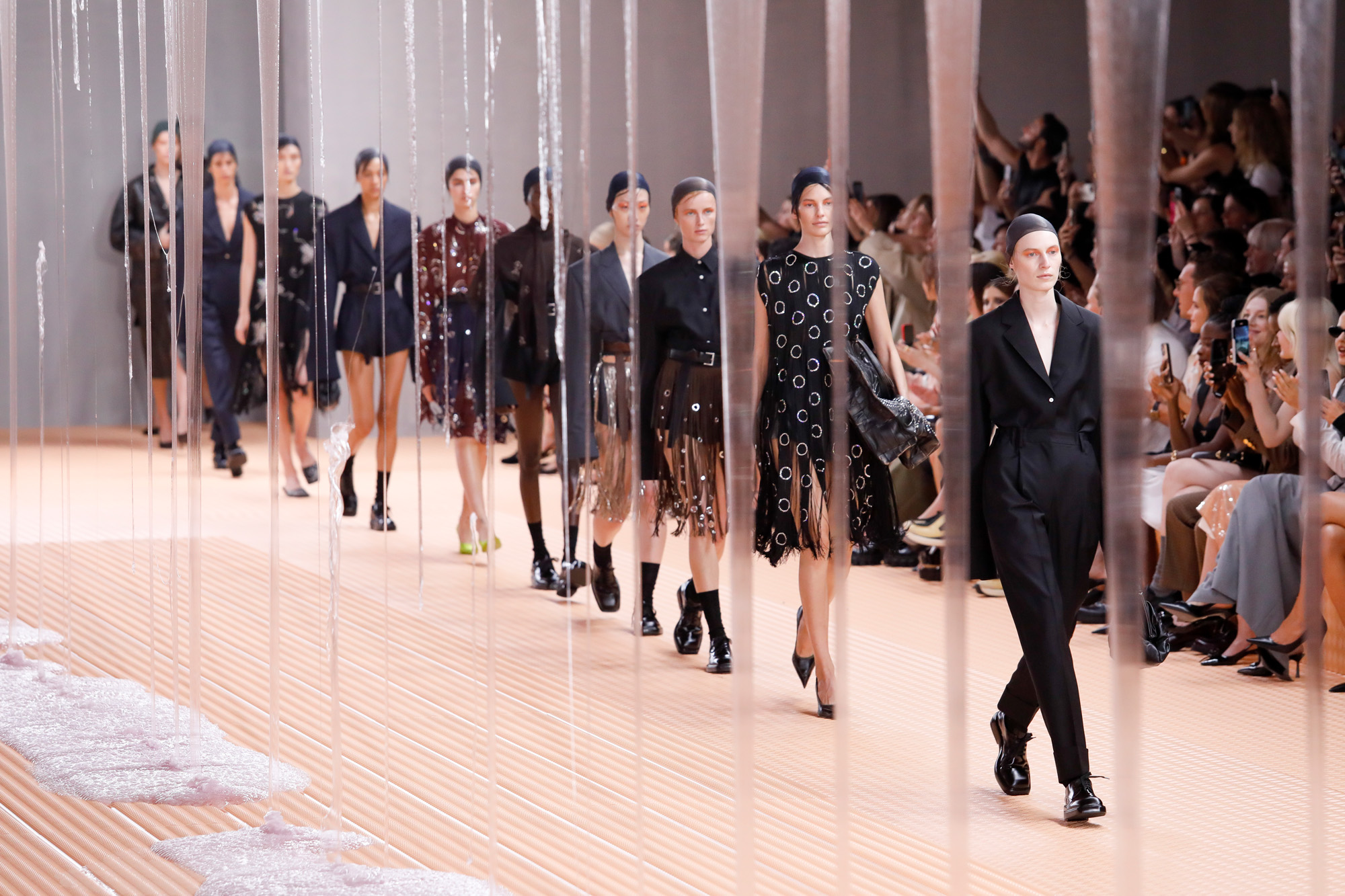
For the S/S 2024 men’s and womenswear set, AMO focused on the idea of ‘organic minimalism’. Walking alongside a cascade of pink slime (having shifted from the green of the menswear show), the models at Prada’s S/S 2024 womenswear show wore dresses in hues of white, pink, light blue, light green, and brown, complementing the salmon-pink set and creating a satisfying visual spectacle in which the fashion and the architectural framework merged seamlessly.
‘That was indeed stunning,’ says Koolhaas. ‘There was no brief provided about the dress that transforms [in] the space. But I do think that sometimes the set influences what they’re doing. There’s a resonance between the fashion and the design of the space, which is based on a conversation, where these elements materialise in different forms later [on]. For us, it is always exciting to see the final show – not just the space itself but seeing who is inhabiting it.’
The slime concept for S/S 2024 introduced fluid architectural elements, something that contrasted with the mechanical rising ceiling used for the A/W 2023 set and somehow felt less industrial, harsh or threatening. This reflects a common trend in the Prada and AMO collaboration – a new set often reacts to the previous one.
A/W 2023
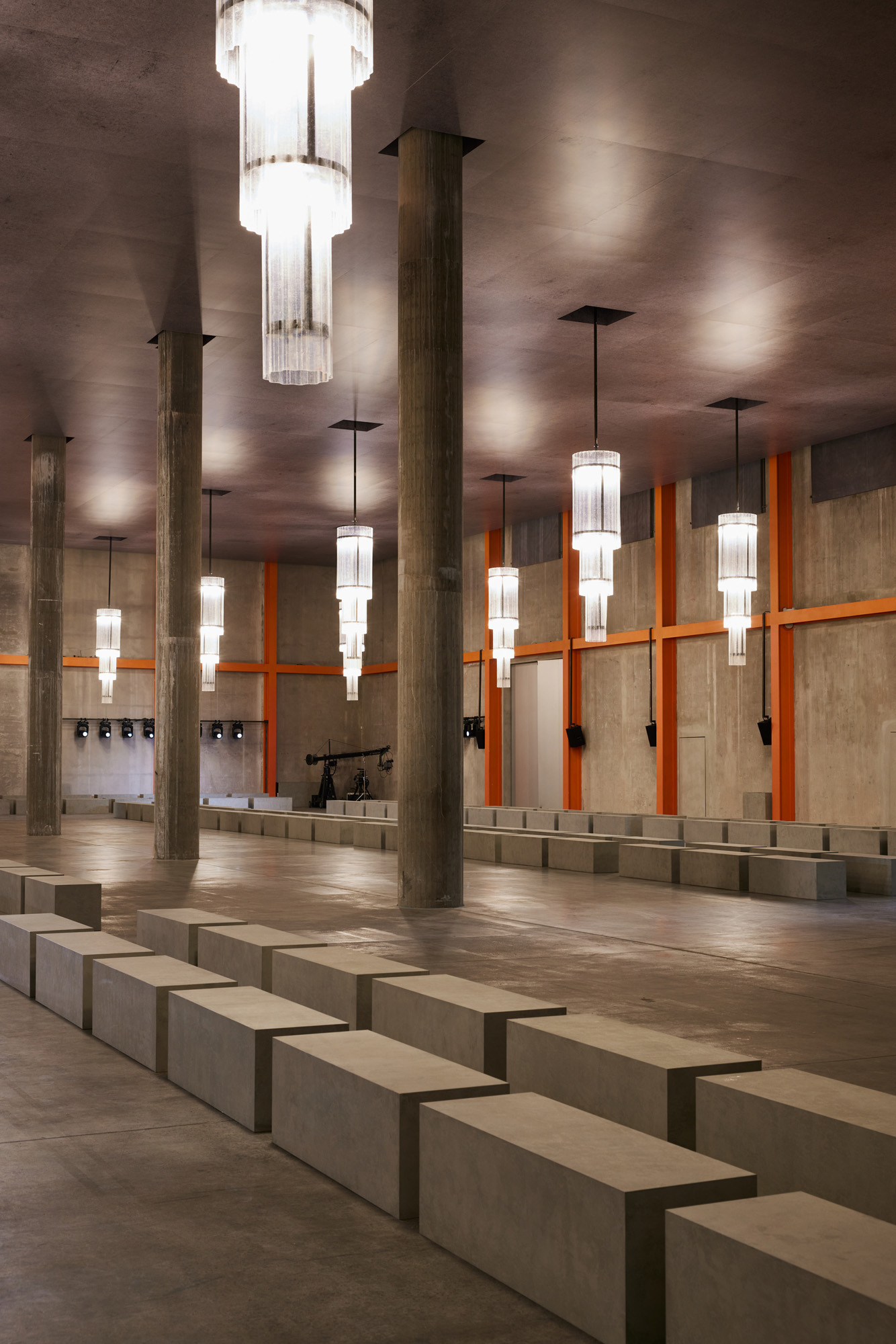
For this show, the focus on the ceilings highlighted a significant architectural ambition. Margheri emphasises the desire for a space that initially seems unchanged, but where introducing just one element can lead to a radical transformation. Here, a ceiling rose as the show progressed, eventually revealing enormous hanging art deco chandeliers (for the men’s show) and columns of sweetly fragranced lilies (for the women’s show). This strategy utilised the height of the Deposito, demonstrating the role of architecture as an engineering discipline to redefine a space.
A/W 2022

For this cinema and sci-fi inspired menswear show, OMA transformed the Deposito into a theatrical space featuring seats from the nearby Cinema Fondazione Prada and a recreation of its iconic olive green carpet. But the spotlight was firmly on the models (including Hollywood actors Kyle MacLachlan and Jeff Goldblum) who emerged and disappeared from tunnels illuminated by bright blue neon lights and lined with metal grating. The resulting scenes echoed a mix of cinematographic references, from Stanley Kubrick’s 2001: A Space Odyssey to Twin Peaks.
S/S 2021
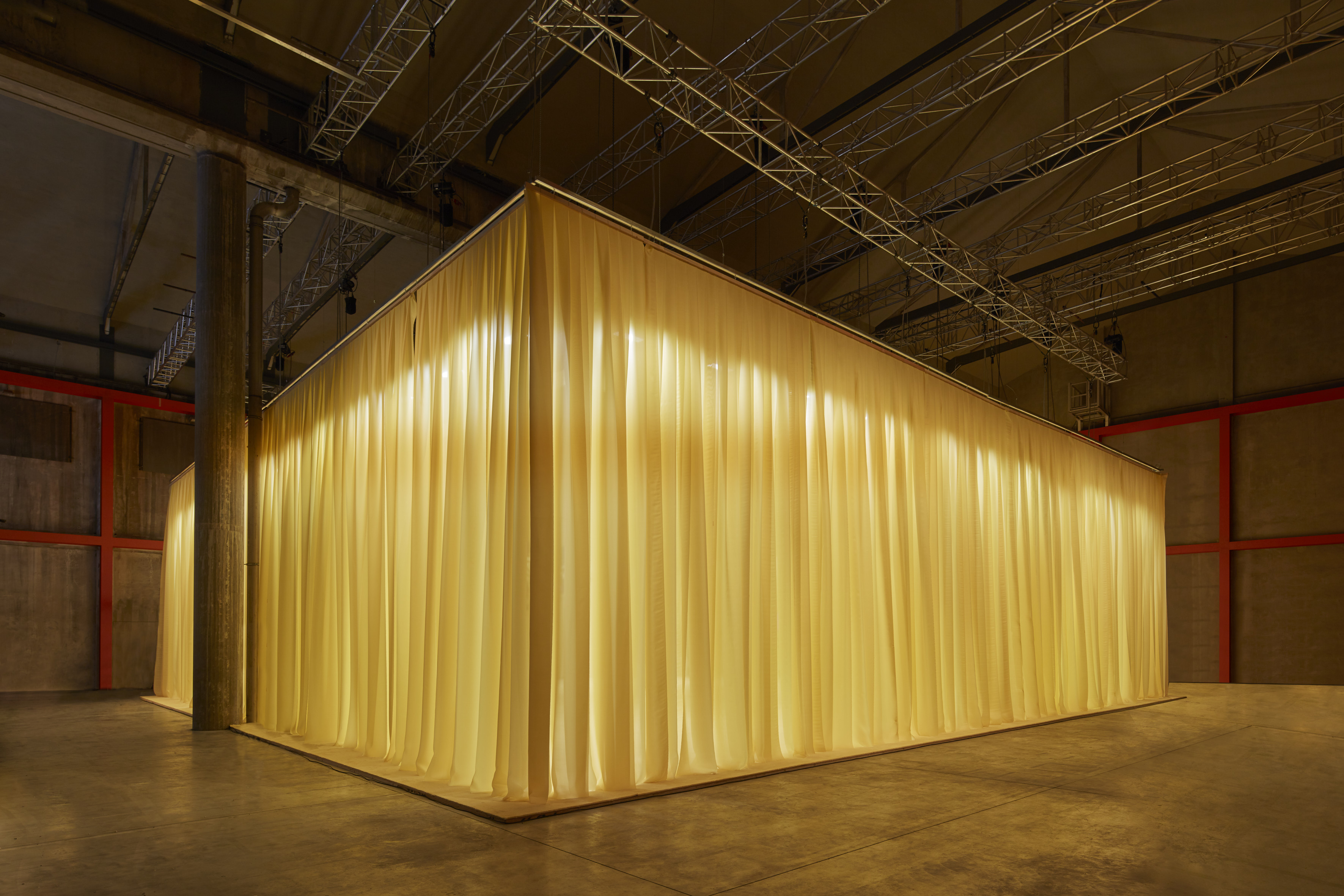
Thanks to their previous spatial experiments, the traditional catwalk had already begun to lose its role as the main principle in Prada’s fashion spaces well before the pandemic. However, the digital presentation of Prada and Simons’ first collaborative womenswear collection, S/S 2021, was markedly different.
‘I would use the metaphor of a film studio because, without any kind of public, we became much more experimental and aware of the camera,’ Koolhaas explains. ‘The freedom of movement that the camera suggested meant that the camera alone became very prominent and present in the show itself. It became a new actor. Since that moment, our approach, even when the public is present, is a lot more about filming and mobility. This change was partly due to Covid but also partly due to Raf Simons’ co-creative direction with Miuccia Prada, who was interested in pursuing that direction. So, the set became a merger of the previous and the upcoming.
S/S 2023
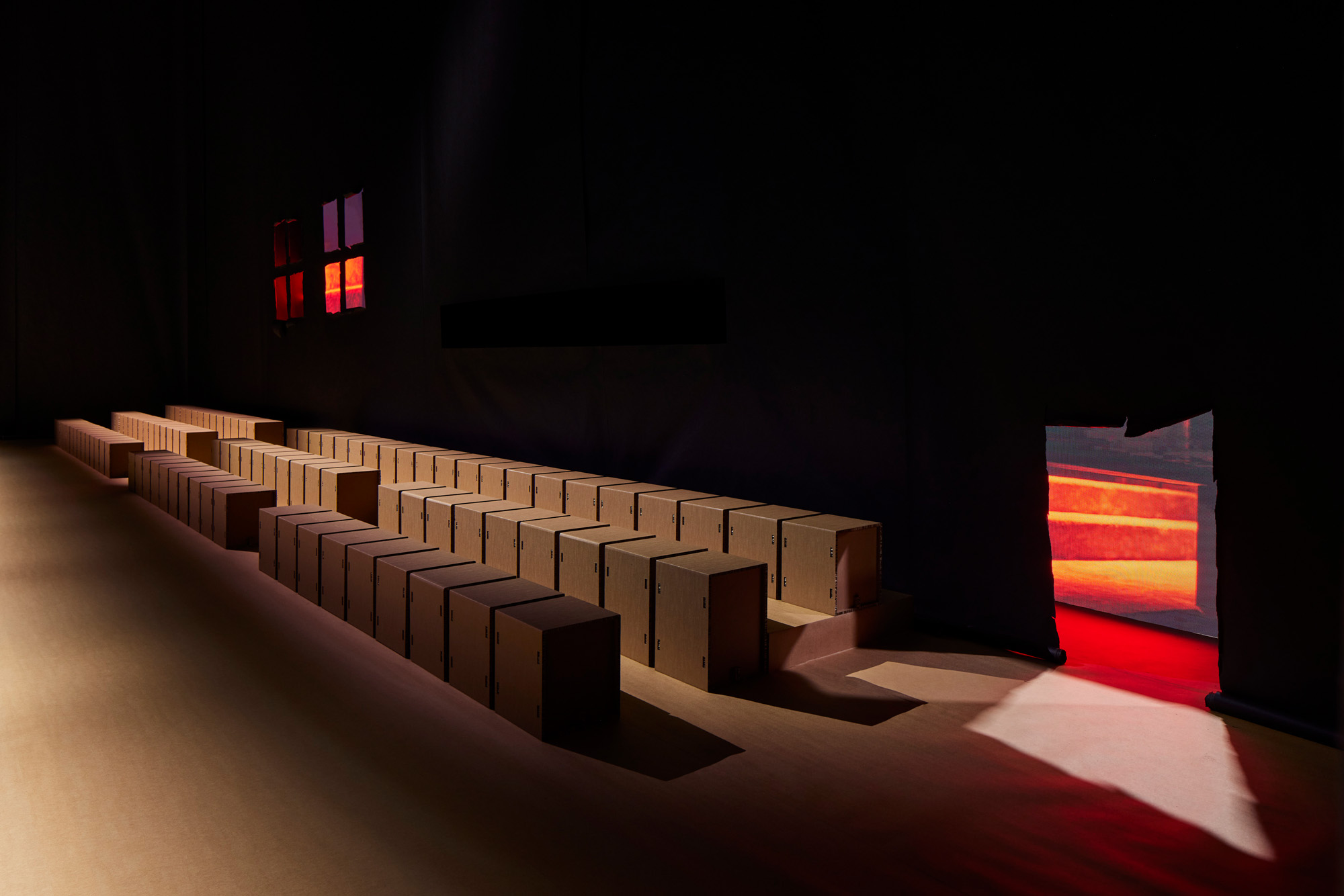
The exploration of height in the Deposito began with the S/S 2023 set, which is a perfect example of the strength of the collaboration. It combined Rem Koolhaas’ intellectually driven architectural philosophy with Prada and Simons’ unique approach to fusing contrasting elements via novel combinations. ‘The Paper House’ – a paper mock-up executed from rolls of regular paper suspended from 10m-high ceilings (white paper for the men’s show, black for the women’s)– served as a subtle tribute to ‘paper architecture’, embodying visionary, yet often unrealised, architectural concepts. More than a mere fashion space, it was a manifestation of architectural imagination and theory.
A version of this article appears in the March 2024 Style Issue of Wallpaper* available in print, on the Wallpaper* app on Apple iOS, and to subscribers of Apple News +. Subscribe to Wallpaper* today.







